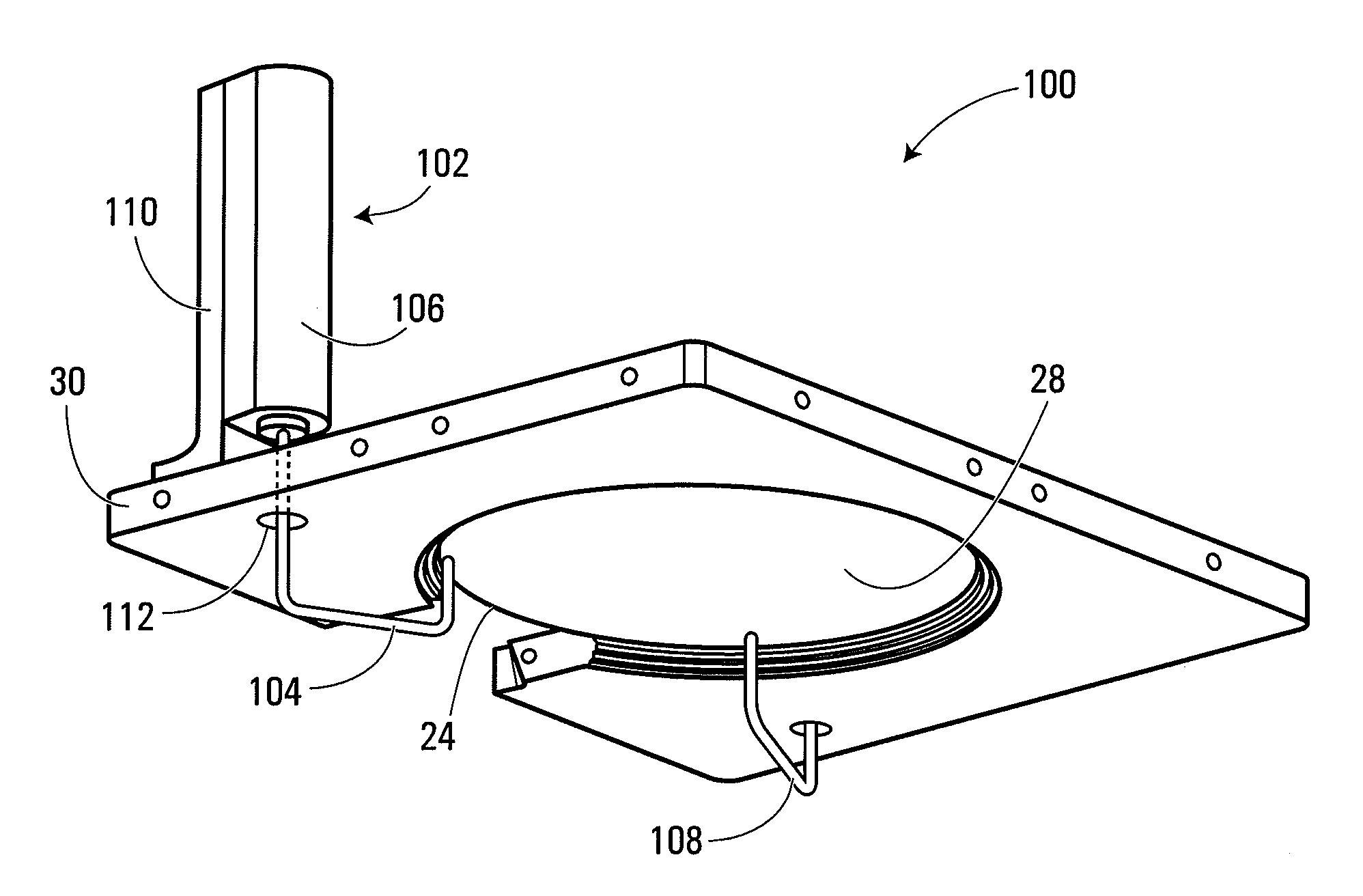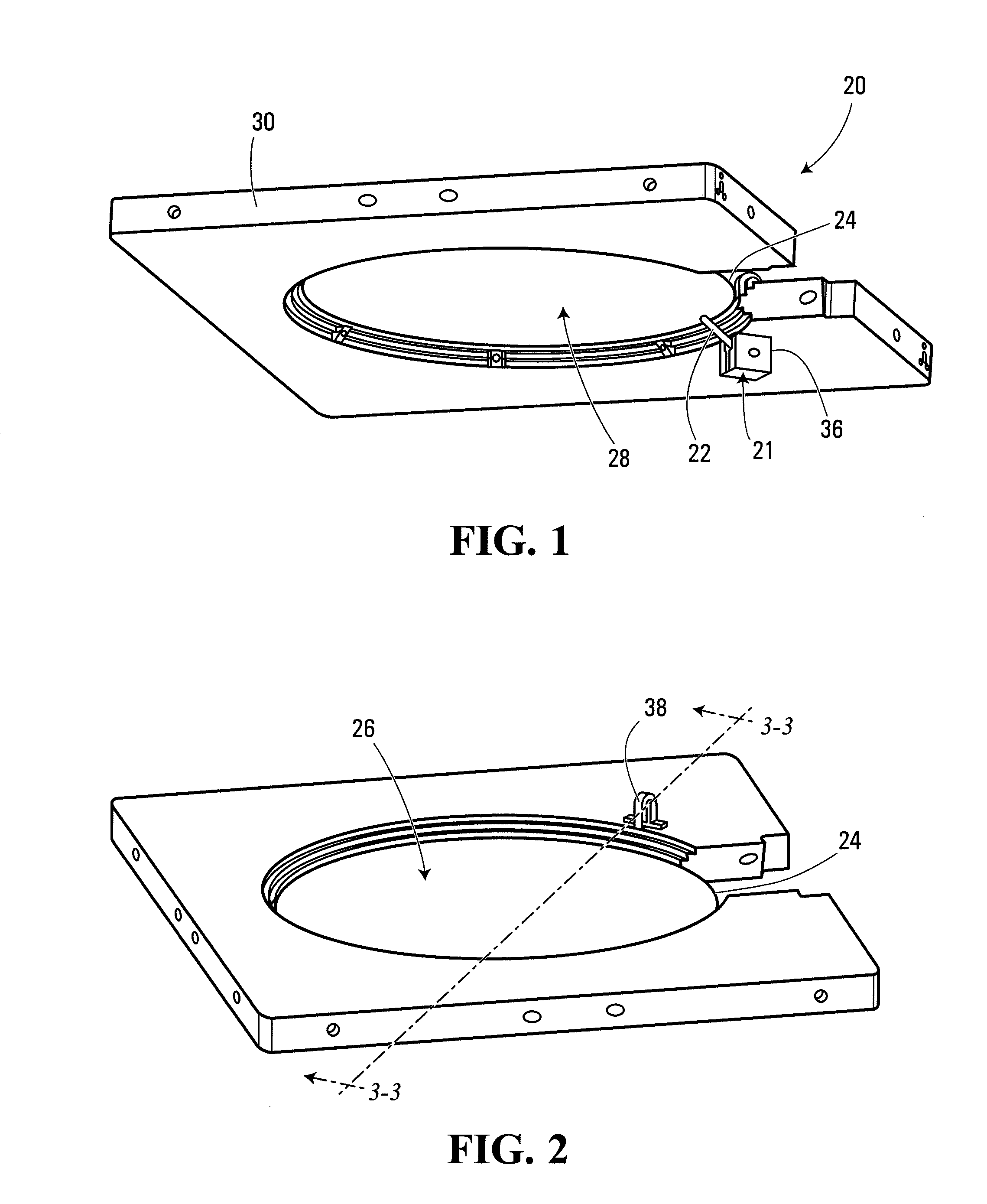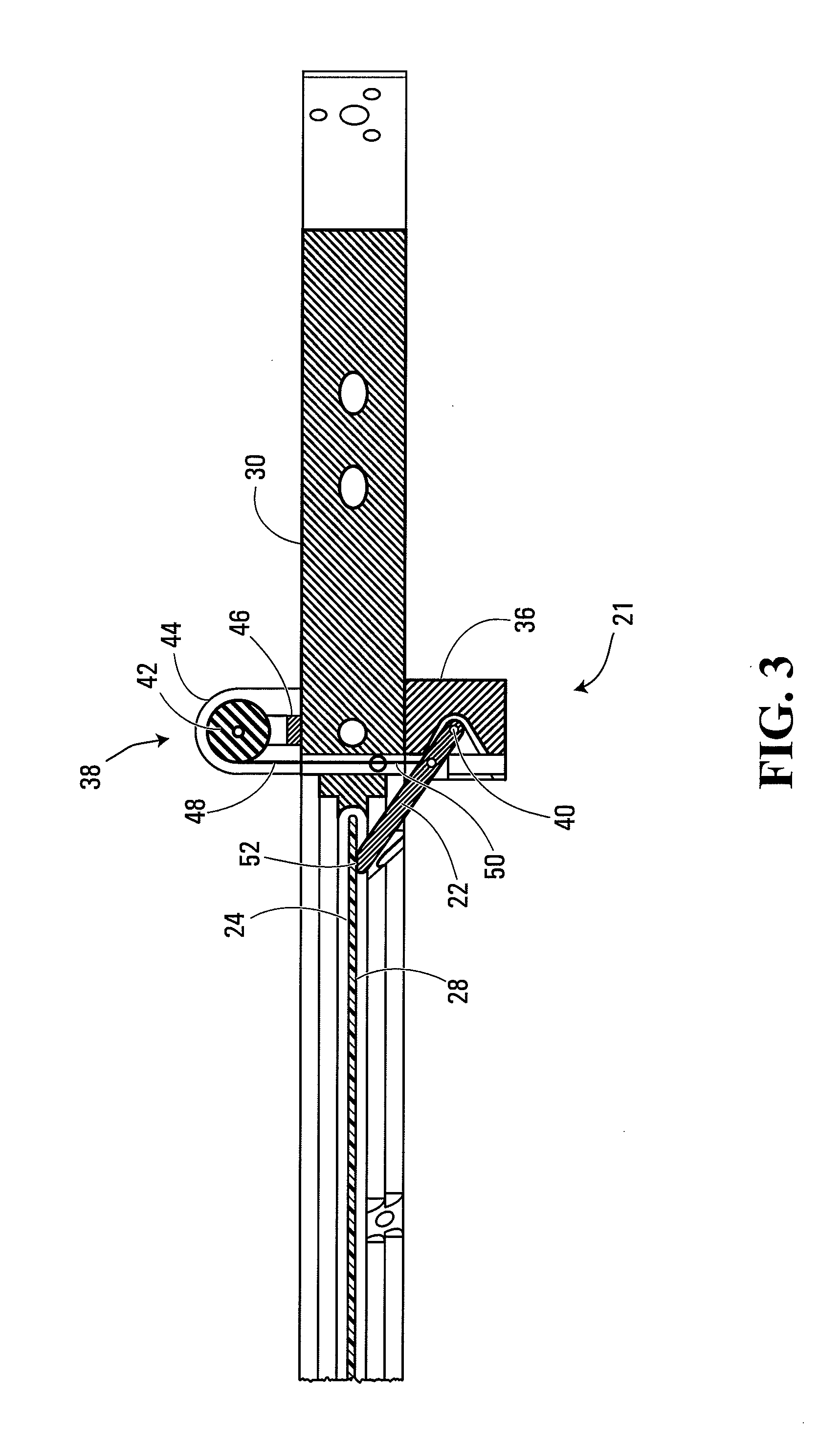Methods and systems for supporting a workpiece and for heat-treating the workpiece
a technology of workpieces and supports, applied in the direction of electrolysis components, manufacturing tools, shaping tools, etc., can solve the problems of large downward force applied to the edges of the wafer, damage to the wafer, and insufficient deformation of the wafer, so as to effectively short effectively lengthen the unconstrained portion
- Summary
- Abstract
- Description
- Claims
- Application Information
AI Technical Summary
Benefits of technology
Problems solved by technology
Method used
Image
Examples
first embodiment
[0126]Referring to FIGS. 1-4, an apparatus for supporting a workpiece according to the invention is shown generally in FIG. 1. In the present embodiment, the apparatus includes a support system 20 configured to support a workpiece 24 while allowing thermally-induced motion of the workpiece.
[0127]In this embodiment, the support system 20 includes a supporting device shown generally at 21. More particularly, in this embodiment the supporting device 21 includes a support member 22 engageable with the workpiece 24. More particularly still, in the present embodiment the support member 22 has a moveable engagement portion 52 shown in FIG. 3, which is engageable with the workpiece 24 and which is moveable to allow the thermally-induced motion of the workpiece while supporting the workpiece.
[0128]In the present embodiment, the moveable engagement portion 52 of the support member 22 includes a tip of the support member. In this embodiment, the support member 22 is rigid, and the moveable eng...
second embodiment
[0146]Referring to FIG. 5, a supporting device according to the invention is shown generally at 80. In this embodiment, the supporting device 80 includes a support member 82, similar to the support member 22 discussed earlier herein. In this embodiment, the support member 82 is mounted to a support member housing (not shown) at a pivot point 84, for pivotal motion thereabout. As in the previous embodiment, the supporting device 80 includes a force applicator, or more particularly a torque applicator comprising a spring 86, in communication with the support member 82 to apply a force to the support member to cause an engagement portion 88 to tend to maintain contact with the workpiece during thermally-induced motion thereof. In the present embodiment, however, the torque applicator is configured to apply a downward force at a location on the support member 82 such that the pivot point 84 of the support member 82 is interposed between the location and the engagement portion 88. More p...
third embodiment
[0147]Referring to FIG. 6, a system for supporting a workpiece according to the invention is shown generally at 100. The system 100 includes a supporting device 102 configured to support the workpiece 24 while allowing thermal bowing or other thermally-induced motion of the workpiece.
[0148]In this embodiment, the supporting device 102 includes a support member 104 having a moveable engagement portion engageable with the workpiece 24. In the present embodiment, the moveable engagement portion includes a tip of the support member 104. The support member 104 is rigid, and the moveable engagement portion is moveable by virtue of the support member 104 as a whole being moveable, as described below.
[0149]In the present embodiment the support member 104 is engageable with the exclusion zone at the outer perimeter of the substrate side 28 of the workpiece. The support member 104 includes a quartz pin, for reasons similar to those discussed in connection with the first embodiment of the inve...
PUM
| Property | Measurement | Unit |
|---|---|---|
| distance | aaaaa | aaaaa |
| angle | aaaaa | aaaaa |
| angle | aaaaa | aaaaa |
Abstract
Description
Claims
Application Information
 Login to View More
Login to View More - R&D
- Intellectual Property
- Life Sciences
- Materials
- Tech Scout
- Unparalleled Data Quality
- Higher Quality Content
- 60% Fewer Hallucinations
Browse by: Latest US Patents, China's latest patents, Technical Efficacy Thesaurus, Application Domain, Technology Topic, Popular Technical Reports.
© 2025 PatSnap. All rights reserved.Legal|Privacy policy|Modern Slavery Act Transparency Statement|Sitemap|About US| Contact US: help@patsnap.com



